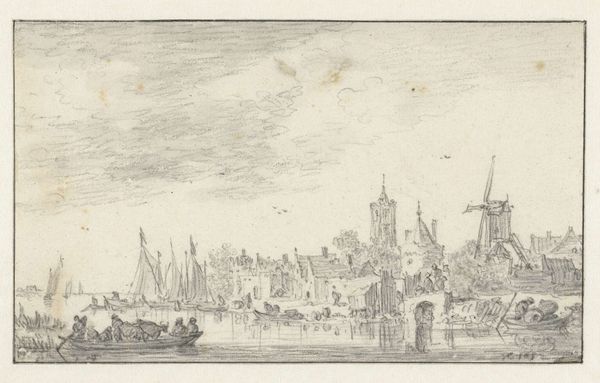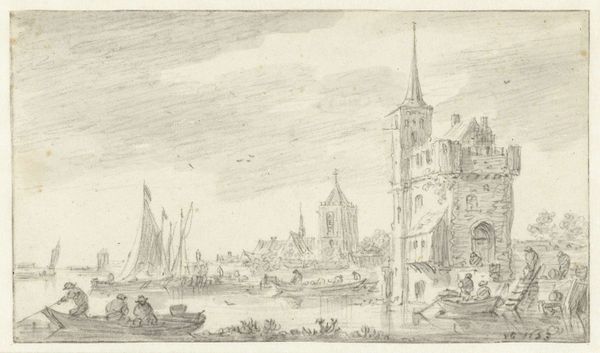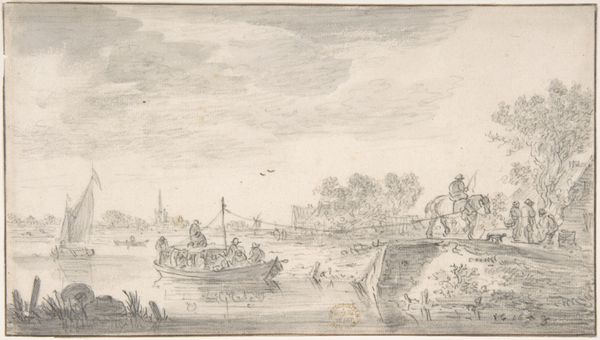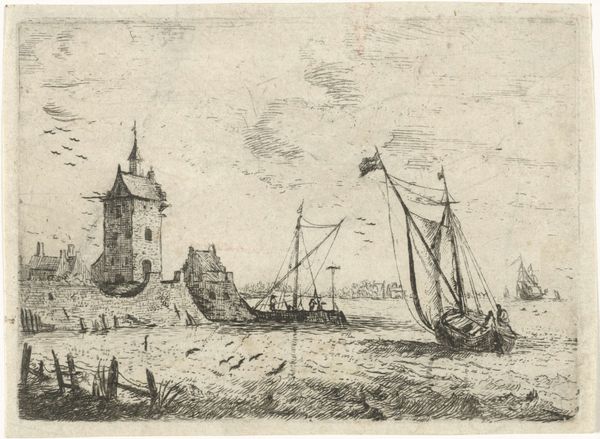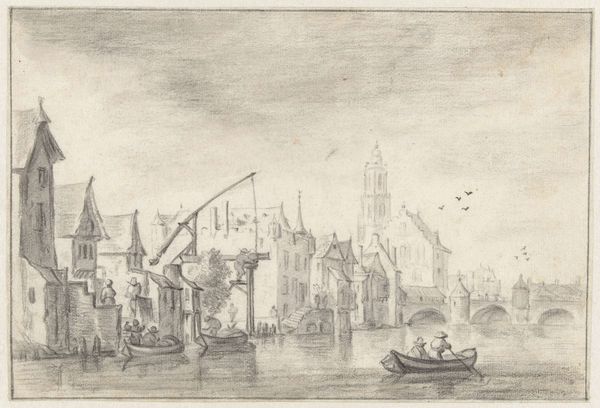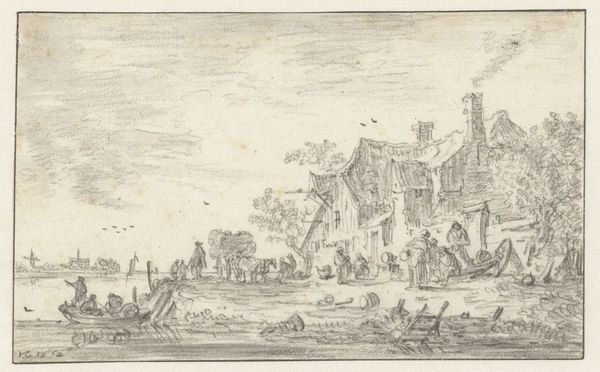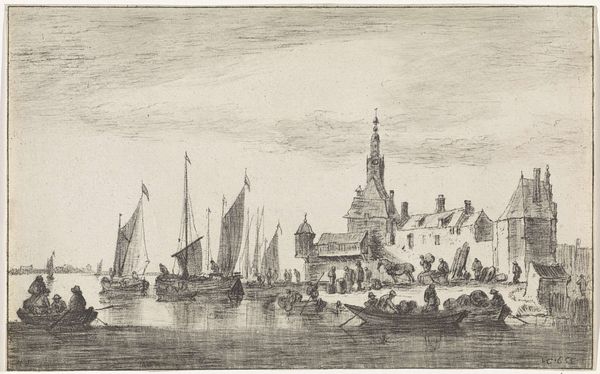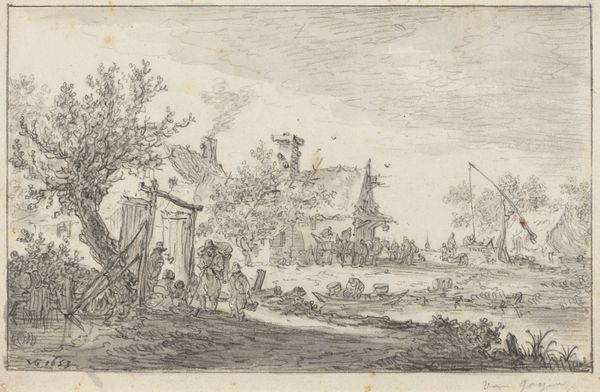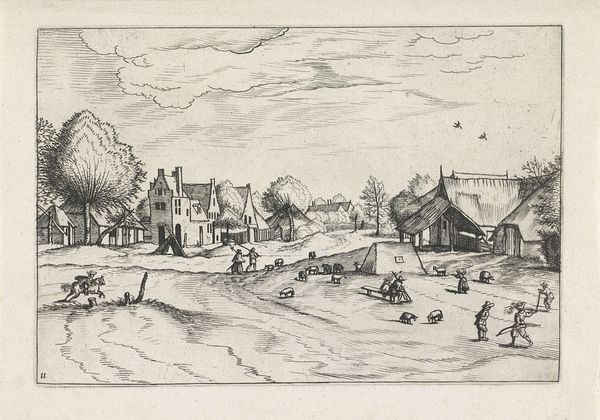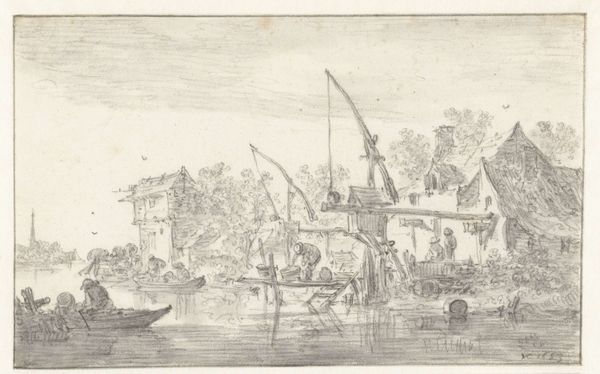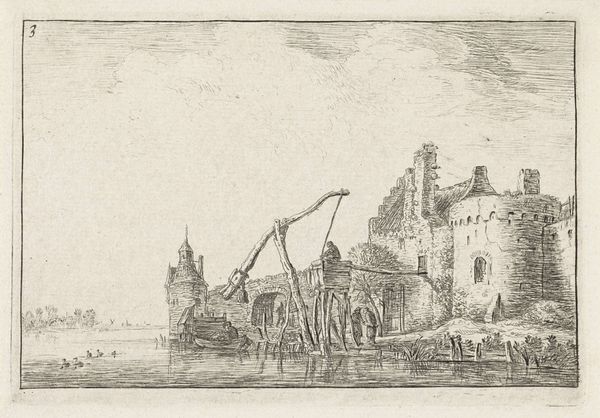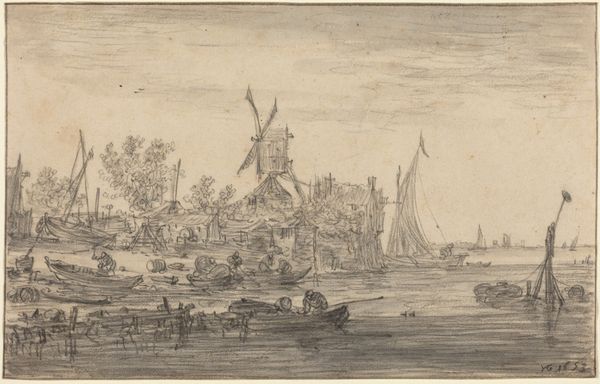
drawing, etching, pencil, graphite
landscape illustration sketch
drawing
quirky sketch
dutch-golden-age
pen sketch
etching
landscape
personal sketchbook
sketchwork
ink drawing experimentation
pen-ink sketch
pencil
graphite
sketchbook drawing
cityscape
storyboard and sketchbook work
sketchbook art
realism
Dimensions: height 113 mm, width 193 mm
Copyright: Rijks Museum: Open Domain
Curator: This drawing, "Gezicht over een rivier op een kerk," from the late 17th century, presents us with an interesting look at Dutch life. The anonymous artist has captured a river scene with a church dominating the skyline, using what looks like pencil, graphite, and etching to achieve this delicate rendering. Editor: It feels so...ordinary, you know? Like a quick sketch from a traveler's notebook. What strikes you about this piece? Curator: Precisely. And that's where the materiality becomes interesting. Notice the tentative lines, the obvious reworking of forms. This isn't about idealized beauty; it's about the labor of seeing, the process of recording a specific place. The tools used—graphite, pencil, etching —speak to accessibility. These weren’t necessarily precious materials. What social strata did these represent, in terms of affordability of materials and techniques, to the artist and viewers? Editor: So, you’re saying the everyday-ness of the subject is echoed in the... humbleness of the materials? Curator: Absolutely. Consider the context: the Dutch Golden Age, a period of immense mercantile power. Drawings like this challenge the grand narratives of wealth and empire. It puts ordinary life and processes at the forefront. They draw on the visual labor of sketching a scene and they can challenge established hierarchies. What does it mean to depict a church, traditionally a symbol of power, alongside the mundane activities of river life, etched using commonplace techniques? Editor: It makes me think about who got to make art, who could afford to, and what kind of stories were considered important. This almost feels like a challenge to traditional "high art." Curator: Indeed. And how the modes of production are interwoven with the subject matter represented. Think about how widely distributed and copied these images would have been as part of a new visual culture! Editor: That’s really changed how I see it. I initially dismissed it as a simple sketch, but it seems there is real material intention at play that connects social status and the economics of this visual scene. Curator: Exactly!
Comments
No comments
Be the first to comment and join the conversation on the ultimate creative platform.
